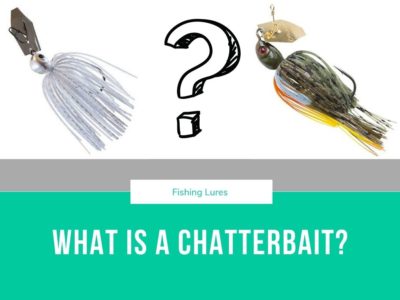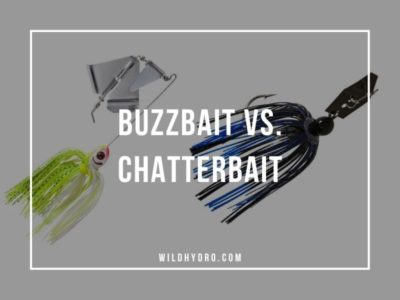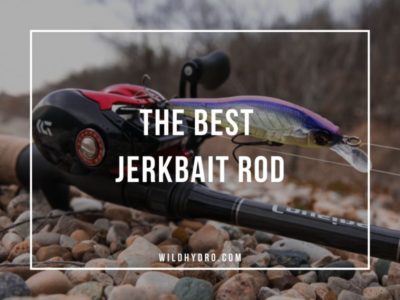Chatterbaits are one of the most popular types of bass fishing lures, and it’s easy to understand why. They’re simple to use, easy on the wallet, and they produce results!
Chatterbait took the fishing world by storm in 2014 when Brett Hite won several professional fishing competitions back-to-back while throwing nothing but Chatterbaits. Brett won the Lake Seminole Bassmaster Elite and then the Lake Okeechobee FLW Tour, with both wins credited to his use of this unique bladed jig.
Chatterbait had been available on the market since 2004 when Ronny Davis first introduced a hexagonal shaped blade attached to a lead-head jig. But it wasn’t until 10 years later when Brett’s accomplishments really brought this lure into the limelight.
Let’s find out exactly what is a chatterbait, when to fish a chatterbait and see what makes them special when compared with other lures like crankbaits and spinnerbaits. What is it that makes chatterbait so effective when fishing for bass?
Table of Contents
What is Chatterbait?
Well first off a Chatterbait is not really a bait at all in the traditional sense of the word. Chatterbait is a type of bladed swim jig, which means it’s a jig with a blade attached above the head. These types of jigs are great because they allow you to fish deep with minimal hang ups while also offering lots of action. This tends to attract more bites than traditional crankbaits and spinnerbaits do.
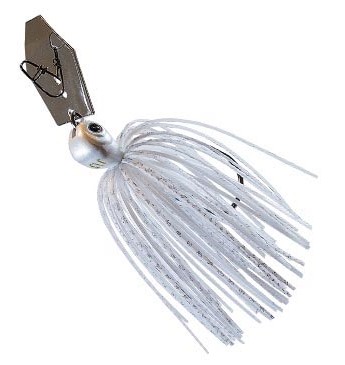
A Chatterbait is a type of fishing lure that is designed to create a lot of noise and vibration in the water. It is used to attract fish towards the area where it has been cast by creating a storm of movement and sound.
The blade on the ChatterBait vibrates as it moves through the water, creating all sorts of flash and vibration that attract bass. The motion of the blade is what makes this lure so effective in attracting fish.
The added movement from your rod tip to your bait causes visual clues that trigger a fish’s instincts to attack your lure.
What is a Chatterbait named after?
The name chatterbait was coined by Ronny Davis Snr, the originally inventor of the Chatterbait.
“When we were working with prototypes in 2003, we couldn’t decide on a name. During a fishing trip to the Saluda River, he (dad) jokingly said the vibration was enough to make your teeth chatter.
From that day forward, we referred to it as the ChatterBait.”
Source: Ronny Davis Jnr recalls his father coming up with the name Chatterbait
This “chatter” is what attracts the fish to the lure and this sound is what is a chatterbait best known for.
The hexagonal blade moves back and forth quite violently in the water in a way that imitates a wounded or dying fish. You will feel every zig and zag as you reel this baby in!
Combined with the sound of the chatter, fish are drawn to the bait in a way like no other.
The rights to Ronny Davis’ original Chatterbait design were bought by Z-Man fishing. So if you are looking for a genuine chatterbait you will be after a Z-Man chatterbait.
Where to fish a Chatterbait?
Chatterbait are especially effective in grassy and weeded areas of water. I have found they work well around docks and wooded structures too, although you have to be a little bit careful around wood as they can get caught up in it.
But really, chatterbaits can be fished like any other lure. You will have best results with chatterbaits when pond fishing or on grassy lakes. They are really built to take fish out of the water in these conditions!
Chatterbaits work in shallow water, deep water and even muddy water. They are not limited to a particular type of water.
I have found that they are also great for catching gamefish due to the noise and attention they create in the water.
When to fish with Chatterbait?
PRO TIP: Throw a chatterbait in spring when prespawn action is at its highest and bass move up to the shallow flats to feed.
For the most part, chatterbaits are best fished in shallow water in the spring. The reason is that they’re designed to look like other baitfish, so it’s easy to distinguish them from other baits. If you’re fishing in deeper water during late spring or early summer when there’s no prespawn action happening, then your best bet would be using an electronic lure like a Jitterbug or Muskie Stickbait.
Chatterbait fishing is often associated with the late spring, early summer period when fish are starting to move up out of their winter holding areas and into open water where they can be caught on topwater lures. This is also when you may find that your favorite spot has dried out or become overgrown by vegetation which makes it difficult for you to find your prey; chatterbaits can help solve this problem as well as provide some extra action for those who prefer a more aggressive approach when fishing for bass (or other species).
Chatterbaits are especially great for springtime prespawn action when bass move up to shallow flats to feed before spawning season. But they’re just as effective during the peak spawn or postspawn periods in the same areas.
How to fish a Chatterbait?
There isn’t really any wrong way to fish chatterbaits, but they’re typically best in 3 to 10 feet of water, depending on the time of year and water temperature.
However it comes down to personal preference. If there was just one magic lure to use to catch those fish then we would all be fishing with it!
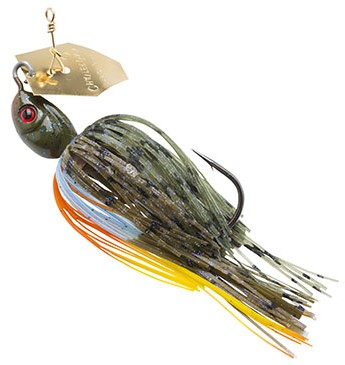
A good rule of thumb when choosing between using chatterbaits vs jigging minnows or other types of bait is this: If you are near to deep sea channels where anglers are catching lots of keepers on live bait, then go ahead and use the bait that is working in those conditions.
However if you are on a lake or pond where there isn’t much structure present at all, plus you can see a lot of grass or weeds, then definitely stick with chatterbaits instead. They will attract attention from hungry bass all too easily.
Is a Chatterbait a topwater bait?
No, chatterbaits are not topwater baits. Think of them as closer to swim jigs. They swim below the surface of the water but above the bottom. Once the blade hits the surface the entire bait rolls over and heads down below.
If you are reeling in like a madman you might find your chatterbait skipping on the top of the water, but this is not how they are intended to be used. If you want a topwater lure then you should be using a Buzzbait, not a Chatterbait.
The Last Cast
Chatterbaits are a great option for any angler, but they can be especially effective in the springtime when bass are spawning. ANytime I see a weedy pond the first thing I reach for in my tackle box is one of my trusty chatterbaits. It works everytime.
If you’re looking to catch more bass with less effort, then a chatterbait is your best bet!
